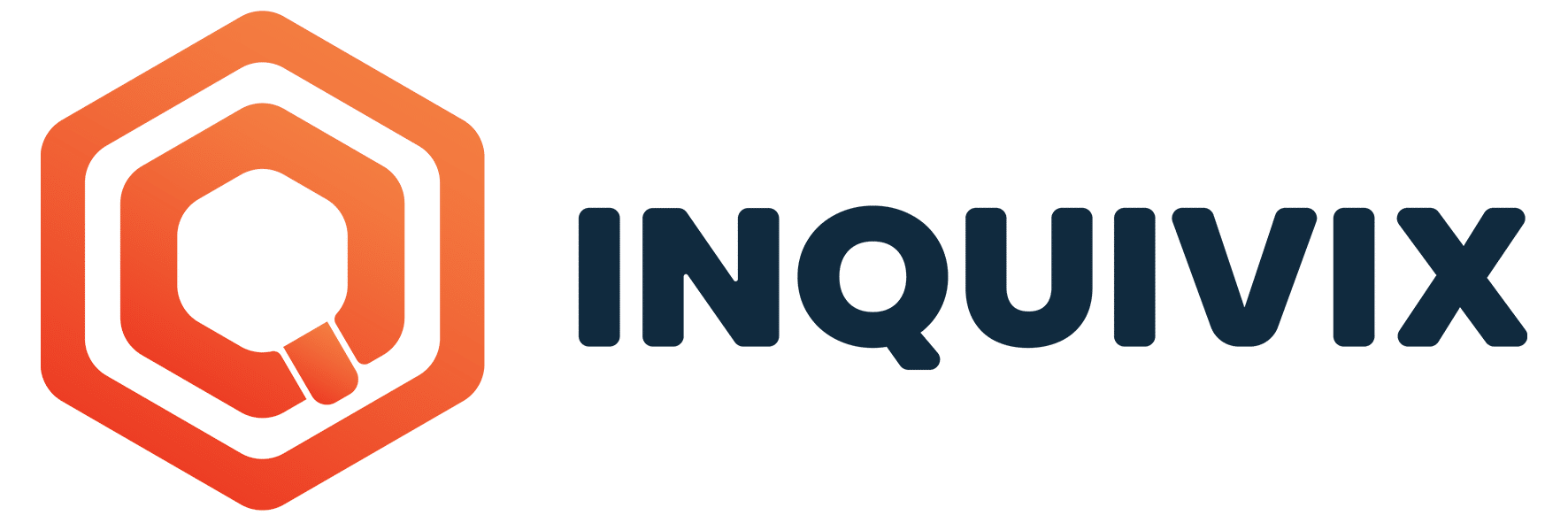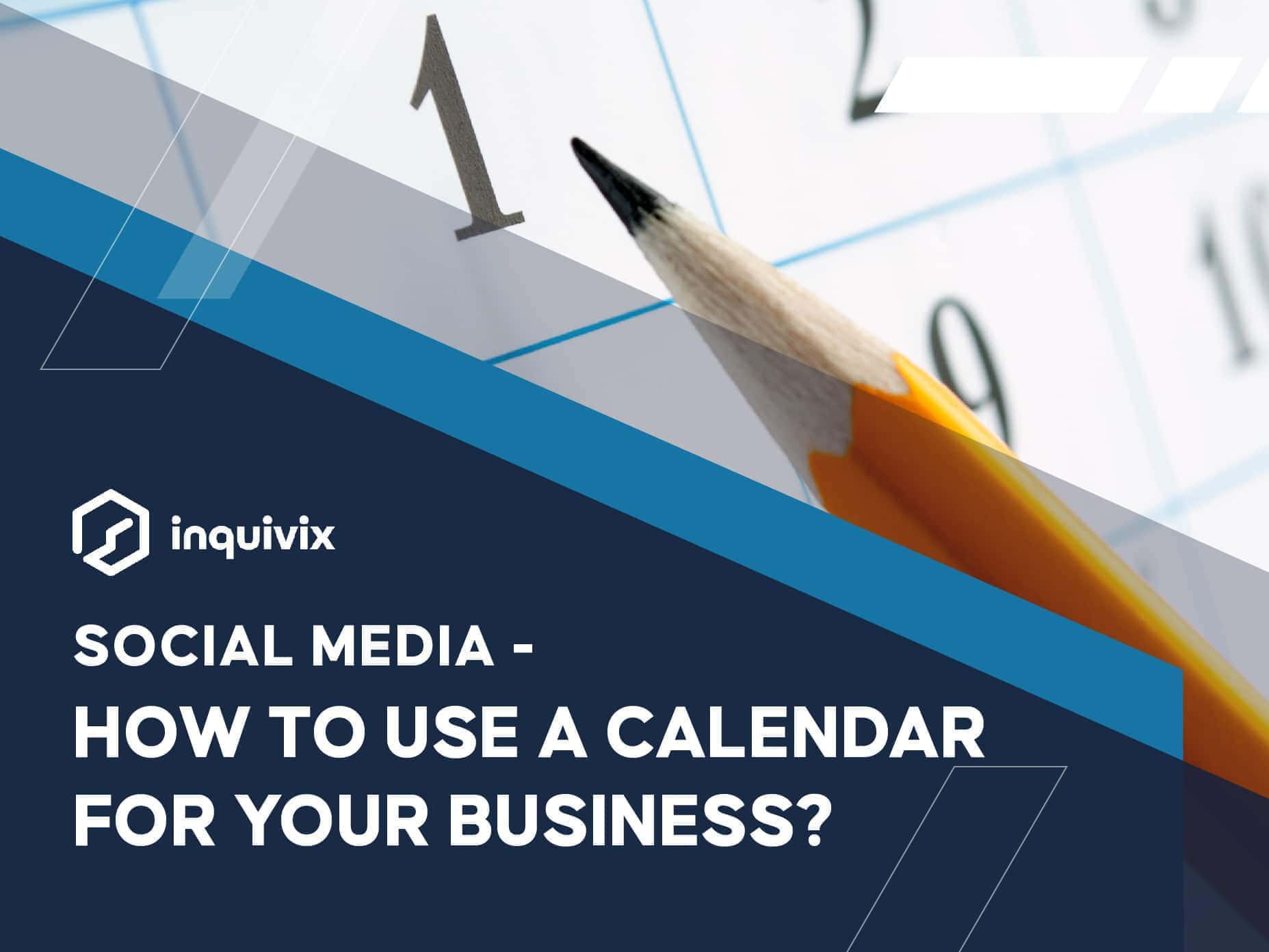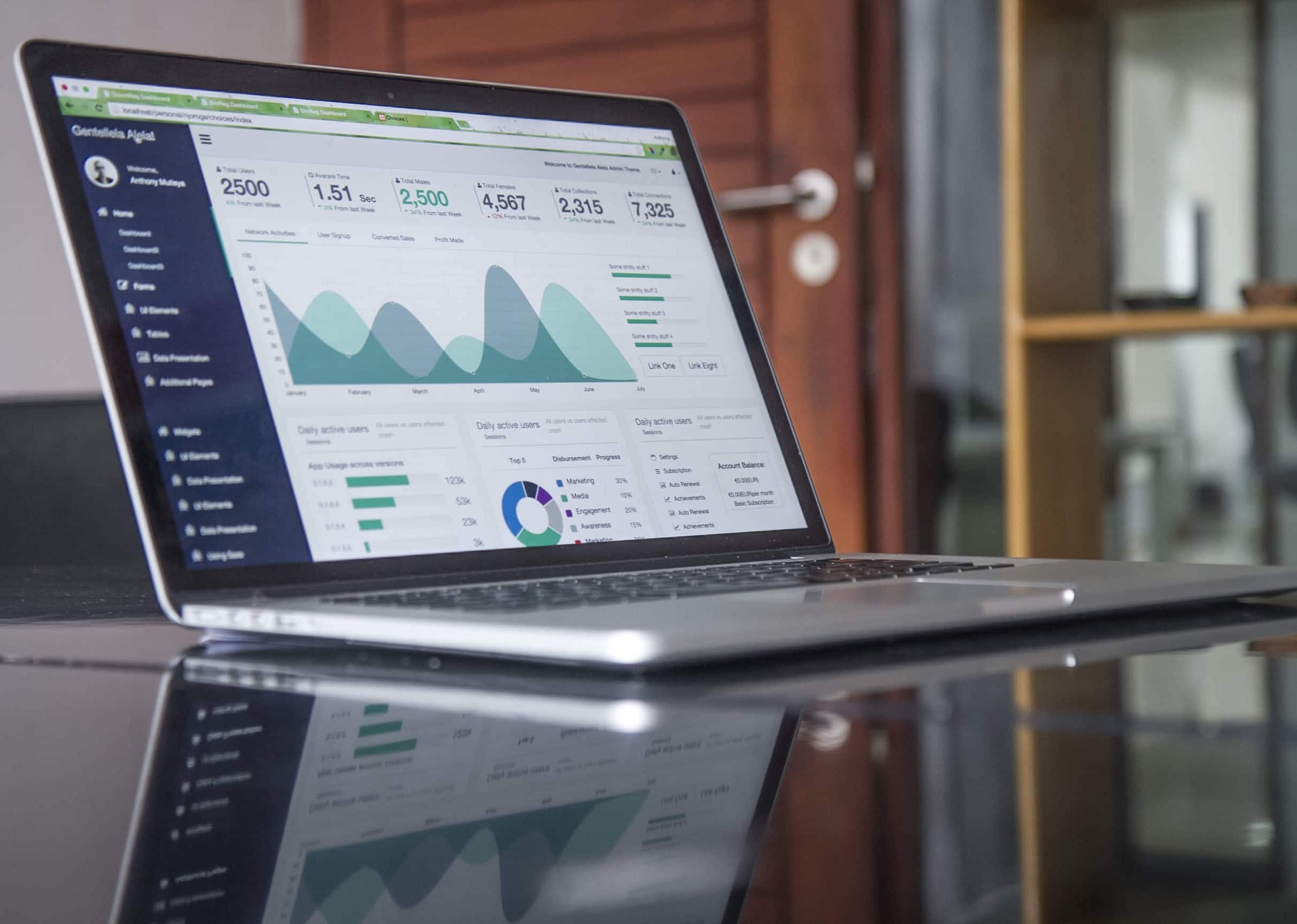Inquivix HQ
1-903, 18 Eonju-ro 146-gil,
Gangnam-gu, Seoul, Korea
06057
Your Guide to Creating A Social Media Marketing Calendar
Social media has completely transformed how we live our day-to-day lives. People have been hooked to their mobile phones, even more, today than before, sharing photos, videos, events, and even their opinions. What’s more, is that social media has also significantly changed how businesses promote and sell their product/s and service/s. It has become one of the essential parts of how businesses can promote their brands, reach their target consumers and make more sales efficiently.
As a business owner, your online relevance is the key to establishing your brand and achieving more profit. Of course, you need to have a strong marketing and content strategy before you attain success. Thus, it is very important to remember that there are several leading platforms that the online community is engaged to. Leveraging each platform to its full potential can be overwhelming, so you should use a social media calendar for each of your business pages.
DOWNLOAD YOUR SOCIAL MEDIA CALENDAR HERE
What is a Social Media Calendar?
As for other marketers, a social media calendar can also be referred to as a “media calendar”, “marketing calendar”, “editorial calendar” or a “content calendar”. It is something you make use of to plan, schedule, and organize all your content.
Be it on a daily, weekly, monthly, and yearly timeline. A social media calendar is usually made by using a spreadsheet or an app. Posting on social media whenever you feel like it will never be enough if you are aiming to establish an online presence.
In addition to this, being on just one social media platform is not earning you a much better advantage against your competitors. As an entrepreneur, you have to understand that one of the most important aspects of a good marketing strategy is knowing who and where your target people are.
What better avenue to reach out to your target consumers than these social media platforms. In making use of these platforms, you also have to determine which type of content works best for each:
Here’s a List of the Leading Social Media Platforms to Help You Out:
This is the most widely used platform and is also considered the largest social media network in the world. Its members are a mix of almost every generation. As for the second quarter of 2019, Facebook has an overall record of 2.41 billion monthly active users.
Unlike Facebook, this social media platform is all about visuals. This is where you can share artsy images, short video clips, live broadcasts, and stories. Instagram is the second most used social media platform as of our present year and is also considered as one of the fastest-growing social media platforms. A huge number of its total users are of the younger generation. According to Statista, 31% of its users are aged between 18 and 24, while 34% are between 25 and 34.
This is a type of social media platform where you can share, view, and upload videos as well as interact with other users. Records show that an average YouTube user spends typically 40 minutes watching videos on the platform.
Twitter is where you can engage in the most current trending topics. While this platform may not have as many users as the two (2) mentioned above, its user engagement is very active. It has over 500 million tweets each day.
This type of social media platform is for professionals as well as the B2B audience. As for professionals, they can search and apply for jobs, present their portfolios, and also widen their professional connections.
Why Do You Need a Social Media Calendar?
As for 2018’s market research, over 92% of content marketers use social media to disseminate their content on different platforms. However, it is not enough that you just have a social media content plan. Juggling different platforms can be very time-consuming. You will need to be organized to save some of your precious time. More so, having a social media calendar will also help you with the following:
- It helps you be on track with certain important dates
Making use of a calendar helps you to look into possible business opportunities and plan something for holidays, special events, and even social media campaigns. - Prevent mistakes
You should have a different content strategy for each of your social media platforms. By having a social media calendar, you can avoid having mistakes in the content you post on each one. - Have a balance on what to post on a certain platform
As with every type of marketing, you have to strike a balance between entertaining your target consumers and at the same time inform them about your product/s or service/s. A social media calendar will enable you to even out the type of post your audience wants to see and the stuff that you need them to see. One quick tip: follow the 80/20 rule, wherein 80% of your content must be interesting, entertaining, or useful, and 20% must sell your product - Be consistent and stay relevant
If you want to stay relevant in the online world, you need to post regularly. Keeping your followers entertained and having them engage in your posts can also pose one big challenge, so having a social media calendar will help you to post frequently and monitor the type of content you will schedule for each day, week, or month.
READ MORE:
Social Media Marketing 101: Learn The Basics
Beginners Guide To Social Media Marketing For Small Businesses
The 7 Best Tips To Boost Your Sales On Instagram
How You Can Create a Social Media Calendar
Social media marketing as of today goes way beyond just posting on one specific social media platform. Now that you have a clearer understanding as to why you need to have a social media calendar, here’s how you can start creating it:
Have a Monthly Goal
Set a goal for each type of content you want to post on each of your social media pages. Doing so will enable you to monitor which types of content works well with your target people, which doesn’t, and what content to change depending on each of your campaign’s performance.
Take note of the following before setting your monthly goals: be specific, start small, have a realistic time frame. As for each month, you have to be able to check your brand’s performance, track down which ones worked and also have new goals in the future. Generally, your monthly goals will typically be under these categories below:
- Traffic
- Subscribers
- Followers
- Sales
- Content
Determine the Types of Content You Want to Use for All Social Media Pages
Remember that before you set your calendar, you need to create a content plan for your specific campaigns and goals. Once you have set up your content plan, your social media calendar will serve as your framework for sharing content. Usually, the type of content that most brands use are of the following categories:
- Events and announcements
- Product promotions
- Blog posts
- Quotes or Motivational Quotes
- User-generated content
- Holidays
Set Your Calendar
In creating your calendar, you have the option to do it manually or download templates that are available online. Follow the steps below if you prefer to manually create your social media calendar:
- Log into your Google Drive.
- Click on New and then choose Google Spreadsheet.
- Click on the “Untitled Spreadsheet” and rename it.
- You will be needing seven (7) columns for the seven days of the week. Next is to delete columns H-Z.
- Select columns A-G, then drag to it going to the right until all columns fill the screen.
- Highlight the cells in the first row: select Format > Merge Cells > Merge All.
- Type in “Month”, choose your font style, and align it on the center.
- As for the second row, type in the days of the week, beginning with Sunday.
- You may freeze the first two rows so they will remain the same way at all times: Highlight both rows and select: View > Freeze > 2 Rows.
- For the next row, type in the calendar dates. Select the top three (3) rows and then use the border tool (top toolbar) for the bottom border.
- Add your social media pages to each date, have one or two rows between each profile for your posting period.
- Select each column and add the right border.
- Add extra rows and a bottom border to the last row in your week one.
- Copy week one. Change the dates, then complete your calendar template.
Add Content to Your Calendar
Now that you have your calendar, you may insert all your planned content for each date. You may include the specific time you want to post, you can also add an email or other distribution channels. As for your additional rows, you may use them to highlight important events for each day.
What Types of Social Media Content Should You Use?
Of course in planning your social media calendar, the type of content you will have to post on each platform must also be included. Keep in mind that social media, in general, is made for interaction. Brands can be able to catch their target audiences’ attention by posting engaging content that will enable a conversation.
Each social media platform has a specific type of content that can work on that platform. Below are a few types of content that can help you in engaging and influencing your target audience:
Interactive content
As from the name itself, this type of content is intended to create an interaction with the target audience. This can be done through the following:
- Polls
This kind of content can be used on different platforms like Facebook, Instagram, and Twitter. Polls allow you to either get a piece of specific information from your audience or get their opinion on a certain topic. One click per follower is a good start to user engagement. - Quiz
Quizzes are one form of interactive engagement where users can click-through and spend a good amount of time on your page. To have an engaging quiz you have to make it fun and informal. Another tip is that you need to have interesting questions with close-ended answers so the users will have lesser time to finish answering.
Visual Posts
Visual content is one of the leading forms of content that the netizens love as of the present. Providing strong visual content will earn you more than just engagement. Your visual content will also strengthen your brand image and it will also encourage people to check out your blogs. Check out these three kinds of visual content:
- Video
This is considered one of the most engaging forms of content. Video has sounds and moving visuals, these things can easily attract people’s attention and at the same time appeal to their curiosity. - Graphics / Photos
While videos are a good form of content, they will require a larger budget and quite some time to produce. As for photos, there are available free photos that you can make use of in free stock photo websites.
Giveaways and Contests
People will not pass on an opportunity of having free stuff. Posts that offer incentives to the mass is one very good way of starting an interaction and drive more engagements to your brand.
Relatable Posts
People engage in posts that they can relate to, it’s a known fact. Posts that can highly create an interaction with the audience are relevant informative posts, valuable content, and content that reflects the audience, take a look at some examples below:
- Meme
This type of content is very popular with the online community. Once you have posted a relevant meme to your followers you will instantly see the results. You can never go wrong with a fun meme. Try using some informal issues from your type of industry and turn them into a playful meme. - Quotes
People love reading quotes that they could relate to. Whether it is a generic quote, there is still a guarantee for people to react to it. In fact, there is nothing better than reading a motivational quote to help you get your day started.
DOWNLOAD YOUR SOCIAL MEDIA CALENDAR HERE
Other Apps and Tools You Can Use to Implement and Schedule Your Calendar
Aside from Google Drive, you can also make use of the following to help you set up and organize your social media calendar:
- Evernote
While this is mainly a note-taking app, it also offers templates and customizable calendars. You can set your calendar daily, weekly, monthly, and yearly. - Hootsuite Planner
You need to be a Hootsuite user before you can use this tool. Manage set up your calendar and schedule all your social media posts in “Planner”, which is found in your dashboard. - Trello
You can use this app not just for your social media calendar, but also for different collaborative tasks and each process from start to finish. You may also include comments, suggestions and brainstorm ideas by using: cards, boards, and lists.






